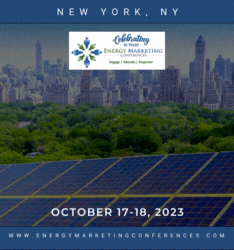|
|
|
|
|
New York To Consider Whether To Provide Ratepayer Funds To Deploy "Zero-Emission Technologies" (Including Generation)
The following story is brought free of charge to readers by VertexOne, the exclusive EDI provider of EnergyChoiceMatters.com
The New York PSC initiated a new process to explore technologies that can support reliability once conventional fossil fuel generation has been removed from the system, under the Climate Leadership and Community Protection Act (CLCPA) statute
Specifically, the PSC stated, "we are initiating a process to determine appropriate next steps to address this gap, including consideration of whether it is appropriate for the Commission to allocate ratepayer funds to incentivize the deployment of zero-emission technologies."
Key among the issues facing the PSC is the definition of "zero-emission technologies", which will be addressed in the new proceeding
Among other questions, the PSC initiated the new proceeding by asking for stakeholder comment on the following:
• How should the term 'zero emissions,' as used under PSL §66-p(2)(b), be defined?
• Should the term 'zero emissions' be construed to include some or all of the following types of resources, such as advanced nuclear (Gen III+ or Gen IV), long-duration storage, green hydrogen, renewable natural gas, carbon capture and sequestration, virtual power plants, distributed energy resources, or demand response resources? What other resource types should be included?
• How should a program to achieve the Zero-Emission by 2040 Target address existing and newly constructed nuclear energy resources. Should the program be limited to specific types of nuclear energy technologies and exclude others?
• Should new measures adopted to pursue compliance with the Zero-Emission by 2040 Target focus exclusively on generation and resource adequacy, or should they also encompass a broader set of technologies that could be integrated into the transmission or distribution system segments, or installed and operated behind-the-meter?
• Should any program to achieve the Zero-Emission by 2040 Target specify subcategories of energy resources based on particular characteristics, such as ramp rates, the duration of their operational availability, or their emissions profile with respect to local pollutants?
• In what ways might a program to meet the Zero-Emission by 2040 Target require reexamination and possibly revision of different tiers of the Clean Energy Standard? Should one or more of the policy approaches that have been used to implement the CES be considered to meet the Zero-Emission by 2040 Target?
• NYISO has adopted an effective load carrying capacity (ELCC) rubric and treatment of Zones J and K as load pockets with special resource adequacy requirements. How should these constructs and other NYISO market rules inform design of a program meant to support the development and deployment of resources capable of achieving a zero emissions grid?
Case 15-E-0302
ADVERTISEMENT ADVERTISEMENT Copyright 2010-23 Energy Choice Matters. If you wish to share this story, please
email or post the website link; unauthorized copying, retransmission, or republication
prohibited.
May 18, 2023
Email This Story
Copyright 2010-23 EnergyChoiceMatters.com
Reporting by Paul Ring • ring@energychoicematters.com

NEW Jobs on RetailEnergyJobs.com:
• NEW! -- Sales Support Specialist
-- Retail Supplier
• Channel Sales Manager -- Retail Supplier
• Business Development Manager
• Operations Manager/Director -- Retail Supplier -- Texas
|
|
|
|







